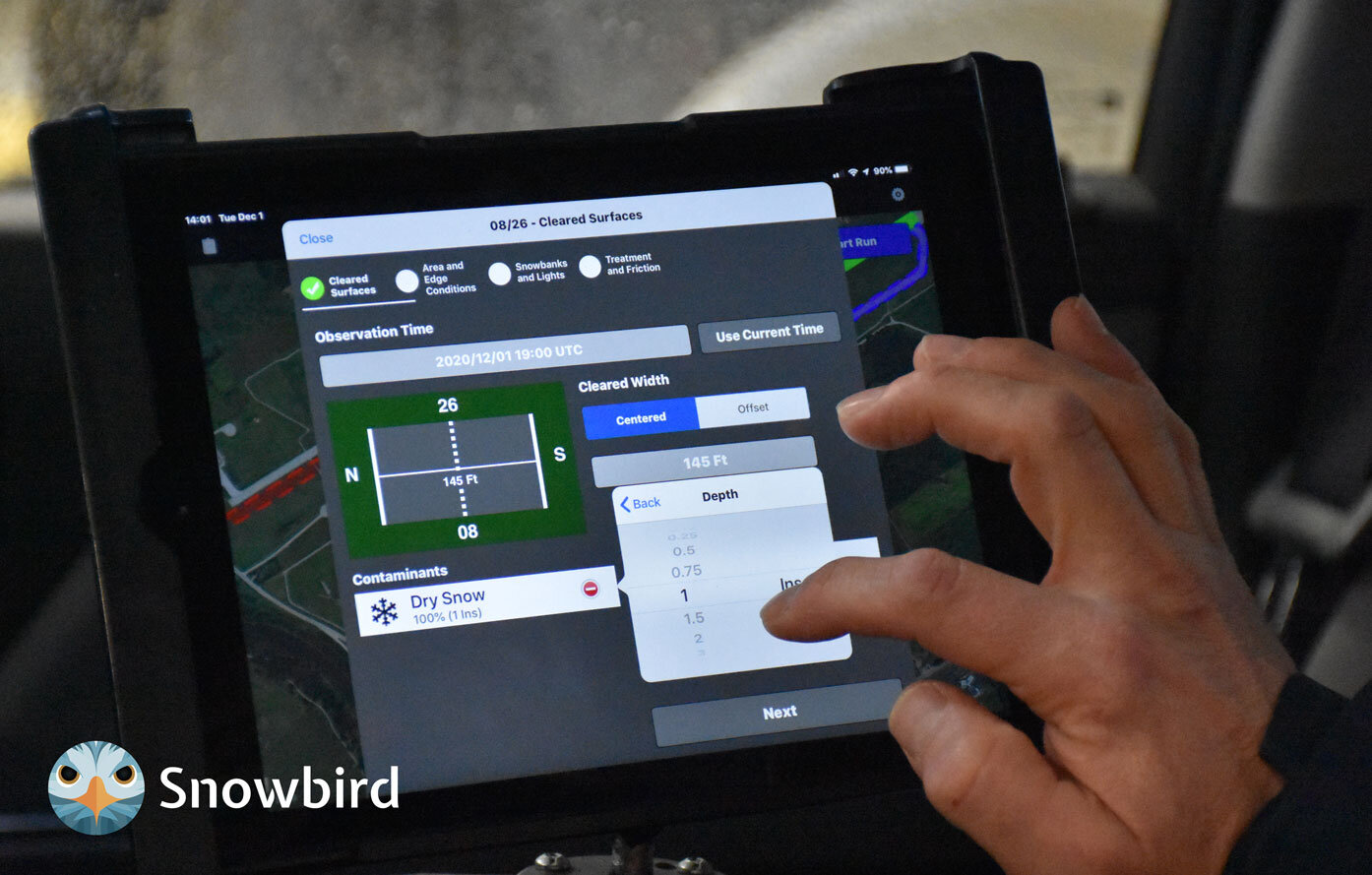

Related Resource: Online Global Reporting Format RWYCC Calculator
On November 4, 2021, the International Civil Aviation Organization (ICAO) has implemented a standardized Global Reporting Format (GRF) for Runway Surface Condition (RSC) reporting (also known as AMSCR reporting in Canada).
Whereas before the GRF effective date each ICAO member state followed their own guidelines and regulations when reporting on runway surface conditions, now (since the GRF implementation), airports around the world use a unified and standardized reporting format. After the reports are created by airfield operations staff, the reports are relayed to pilots via the local ANS (Air Navigation Service) as an RSC NOTAM (in Canada these were previously knows as SNOWTAM or NOTAMJ bulletins).
In ICAO's own words:
The new ICAO methodology for assessing and reporting runway surface conditions, commonly known as the Global Reporting Format (GRF), enables the harmonized assessment and reporting of runway surface conditions and a correspondingly improved flight crew assessment of take-off and landing performance. [1]
In short, the GRF harmonizes the assessment and measurement of runway surface conditions for all ICAO member states. This gives pilots worldwide a more objective understanding of the conditions on the ground before and during landing, which improves aviation safety and efficiency.
While the original applicability date was November 5, 2020, ICAO had decided to postpone the applicability requirements to November 4, 2021 due to the global COVID-19 pandemic. [2]
Note that each country’s regulator had the option to set their own implementation date. For example, the implementation date for GRF in Canada was August 12th, 2021 [3].

The Global Reporting Format brings with it many changes to AMSCR reporting, among them:
The ability and recommendation to reporting runway conditions for each third of a runway, rather than just average values over the entire runway.
Updates to the list of reportable contaminants (now called conditions), with some subtle changes on when each is applicable. This includes percent coverage increments, as well as allowed depth values, and even the number of allowed conditions.
The introduction of a Runway Condition Code (RWYCC) – an objective value between 0 and 6 for each runway or runway portion, in order to aid pilots in landing operations. The Runway Condition Assessment Matrix (RCAM) is an aid to be used by runway inspectors to arrive at the correct RWYCC value, based on objective measurements and rules.
The ability to upgrade or downgrade RWYCCs based on a runway inspector's judgement on the ground. Such upgrades and downgrades must be logged for auditing purposes.
Not strictly related to the GRF – but similar in theme and coinciding in time – are changes to reporting of the Canadian Runway Friction Index (CRFI) (a numeric value between 0 and 1 that indicates the friction level of a runway surface, and it is measured using specialized friction measuring equipment such as the Mu-Meter or the GripTester).
AC 300-019 [3] states that:
CRFI measurements may be reported by runway thirds for runways greater than or equal to 6000 ft (1829 m) in length. If the runway condition information is not being reported by runway thirds, the runway average CRFI is reported.
This is congruent with the GRF-related changes of reporting runway conditions in thirds.
In short: runway surface condition reporting compliance for airports is more complicated that it once was. The good news, however, is that it is now standardized worldwide.
The good news about the added complexity is that software can help – many of the validation rules and procedures can be suggested and double-checked by an RSC reporting system such as Snowbird – one of the first and most advanced tablet-based runway reporting systems on the market.
We have been helping airports submit RSC reports in a safe and cost-effective manner since 2013, and our flagship Snowbird Reports GRF, is of course be compatible with the Global Reporting Format. We've got some tricks up our sleeve to make dealing with Runway Condition Codes and upgrades/downgrades a breeze.
Learn more on our homepage, and contact us for a free demo today.

REFERENCES
[1] https://www.icao.int/safety/Pages/GRF.aspx
[2] https://www.icao.int/safety/SiteAssets/Pages/GRF/073e.pdf
[3] Transport Canada Advisory Circular No. 300-019
[4] NCR-091-2020 – copies can be requested from Transport Canada